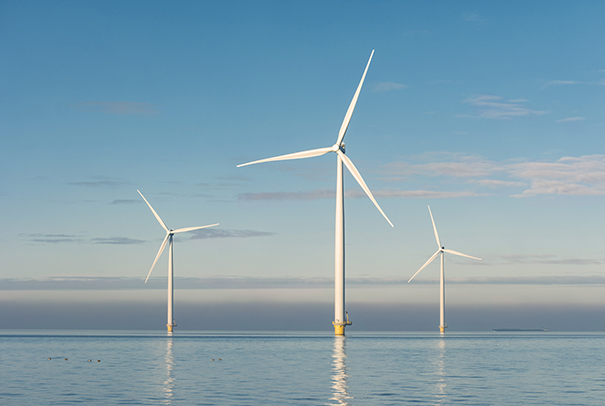
Meeting this commitment will require action across a broad range of sectors, notably within the energy supply sector, where continuing the transition to renewable energy is an integral part of the government’s net-zero strategy.
Renewable energy is also emerging as an important part of the UK government’s post-COVID-19 recovery plans. Promising to ‘Build Back Better’, the Prime Minister has pledged to make the UK a leader in clean energy – and offshore wind energy in particular.
Progress is being made. In 2019, renewable energy accounted for more than a third (37.1%) of total energy generated in the UK, the first time it has done so. Of that, wind played the primary role and is central to future plans for the sector. The UK already has the largest installed offshore wind capacity in the world with a further 6.117GW in construction, including the biggest offshore wind farm in the world at Doggar Bank (2.4GW).
Limits to natcat cover
While the more difficult market conditions may continue for the time being, political support and the number of new projects in the pipeline may ultimately see new insurance markets open up for offshore wind. One area that is likely to remain a long-term challenge for insurers and reinsurers, however, is coverage of natural catastrophes (natcat), such as typhoons, tsunamis and earthquakes.
With one natcat capable of damaging multiple offshore installations, these extreme events pose a severe risk to offshore wind farms, particularly in the burgeoning Asian market, and to natcat insurance capacity. This risk is only exacerbated by the limited capacity in any region to repair such damage, which would likely lead either to increased costs for repair or longer outage periods. As a result, sublimits to natcat cover are now often agreed within insurance policies.
Emerging technologies bring new risks
The scaling-up of emerging technologies also brings its own risks. As part of the UK’s planned expansion in offshore wind, for example, there is a target to deliver 1GW of floating wind capacity by 2030. Although the concept of floating wind is not new, the technology and design of installations is still developing – with only one commercial floating wind farm currently in operation at Hywind Scotland.
The UK’s planned 1GW build-out is 15 times larger than the current global installed capacity and represents an unprecedented scaling-up of ambitions for a sector still lacking commercial maturity.
This raises questions not only about the technical feasibility of such projects but also about the costs to develop and build them, and about the market support needed for any power they produce. Dealing with the unknown also poses significant challenges for insurance companies when developing coverage for emerging technologies.
Piloting to a greener future
There is little doubt that offshore wind has an important role to play in meeting green growth targets. But with greater experience and understanding of the risks posed by offshore wind projects, insurers are taking a more cautious approach to the sector.
To learn more about how our specialist energy insurance and consulting teams can help guide you through the current challenges, contact us on the details below.




